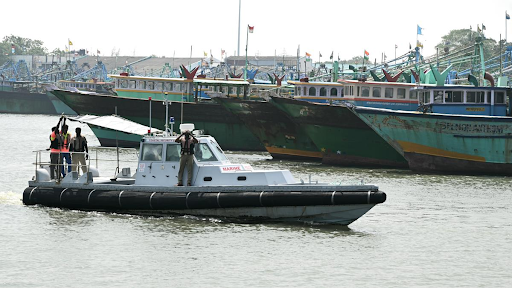



Women comprise 4.4% of the CAPFs, with efforts ongoing to boost their numbers. Initiatives include fee waivers, relaxed physical tests, maternity leave, and creche facilities. Despite a rise in recruitment since 2014, challenges like tough terrains and limited representation persist. Committees urge targeted recruitment drives and supportive policies to enhance participation.

Disclaimer: Copyright infringement not intended.
The government has assured Parliament that there is a “constant endeavour” to increase the number of women in forces such as CRPF, CISF, etc.
The CAPFs work under the Union Home Ministry and include seven paramilitary forces – the Assam Rifles, Border Security Force (BSF), Indo-Tibetan Border Police (ITBP), Sashastra Seema Bal (SSB), Central Industrial Security Force (CISF), Central Reserve Police Force (CRPF), and the National Security Guard (NSG) special task force.
Women make up 4.4% of the 9.48 lakh-strong CAPFs, including the Assam Rifles.
The CISF, which guards public spaces such as airports, the Delhi Metro, and important government buildings such as the Parliament Complex, has the highest representation of women – 7.02% of the total force strength of around 1.51 lakh.
The representation of women in the other forces is lower – 4.43% in SSB, 4.41% in BSF, 4.05% in ITBP, 4.01% in the Assam Rifles, and 3.38% in the CRPF.
It is noteworthy that the number of women in CAPFs has gone up from 15,499 in 2014 to 42,190 in 2024.
835 women personnel have been recruited in CAPF and Assam Rifles in 2024, while 5,469 are in the process of recruitment.
2016: The central government decided to reserve a third of all constable-level positions in the CRPF and CISF for women, and 14-15% in the border guarding forces — the BSF, SSB, and ITBP.
2022: Parliamentary Committee on Home Affairs expressed disappointment over the “abysmally low” number of women CAPF personnel. Women constituted only 3.68% of the strength of the forces at the time. Despite efforts of the Home Ministry to encourage the recruitment of women in the CAPFs and Assam Rifles, the strength of women is abysmally low.
To take concrete steps to increase the representation of women in CAPFs. Phase-wise recruitment drives for women should be put on fast track, particularly in the CISF and CRPF, and steps should be taken to create a conducive environment in the border outposts so that the women are motivated to join security forces.
2022 Report: The Ministry should strive to identify the factors preventing women from joining the forces, and to come up with practical solutions to encourage their participation.
2023: The Standing Committee on Personnel, Public Grievances, Law and Justice, suggested “soft postings” for women in order to incentivise them to join the CAPFs.
A major constraint that prevents women from joining forces is the difficult terrain and conditions in which they might have to work. So, a policy may be explored for women officers to be given soft postings and not subjecting them to extremely strenuous and difficult working conditions unless required in extreme circumstances like war, armed rebellion etc., and that too when there is an absolute shortage of males who can be deployed by the forces.
2024: The government had taken several steps to encourage women to join the CAPFs and Assam Rifles, including application fee waivers and relaxations in the Physical Standard Test (PST) and Physical Efficiency Test(PET) in comparison to male candidates.
Central government facilities such as Maternity Leave and Child Care Leave were also applicable to CAPFs, creches and Day Care Centres were provided by the CAPFs to women employees, and committees were constituted at all levels to check sexual harassment and to expeditiously deal with the complaints of women personnel.
READ IN DETAIL:
https://www.iasgyan.in/daily-current-affairs/cisf-30
https://www.iasgyan.in/daily-current-affairs/women-in-command-roles
ABOUT CAPF:
https://www.iasgyan.in/daily-current-affairs/central-armed-police-force-capf
Source:
|
PRACTICE QUESTION Q.Examine the role and challenges faced by women personnel in the Central Armed Police Forces (CAPF) in India. How can their participation be enhanced to improve gender equality and overall operational efficiency? (150 words) |





© 2025 iasgyan. All right reserved